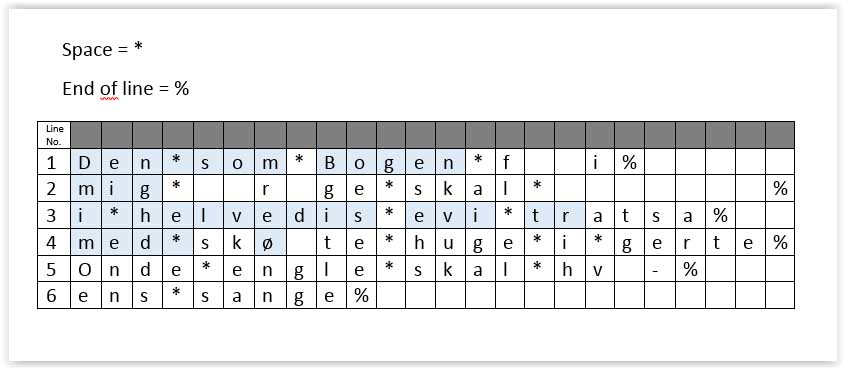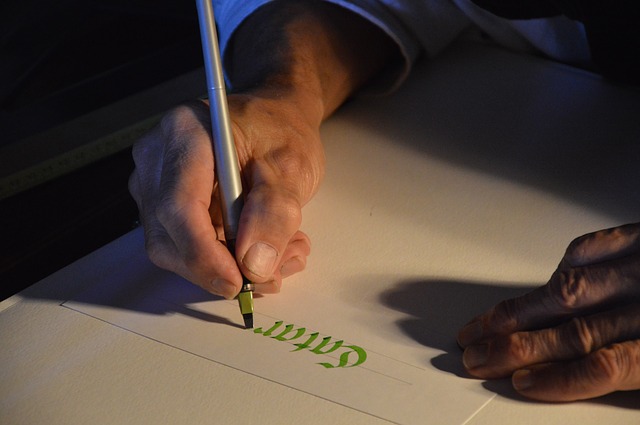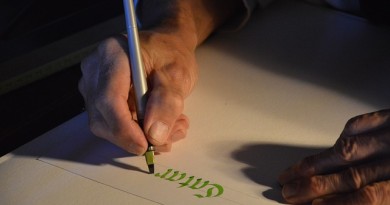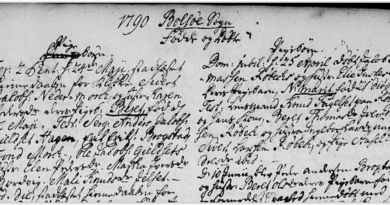How to read Gothic handwriting – 5
This is the last installment in my little study of Gothic handwriting. If this topic interests you, I recommend that you start with the first installment and read through.
Learning to read Gothic handwriting takes time . If a letter is interpreted wrong, it can be difficult to understand the word. I try to stick to simple texts now as I am a novice. When working with a document, I have found it useful to write it down.
I notice that the spelling in old documents was relatively unstable. A word may therefore have varying spellings.
AS I have mentioned before I have learned a lot from Geelmunden (2015). Parts of what is written below is from his article Geelmuyden, Knut: “Gotisk skrift – En kort veileding i lesing av gamle kilder” Bergen 2015 that is available online, unfortunately only in Norwegian.
Names in the sources
Names in earlier times was not as fixed as in our time. We easily see this when we go through the church records. A person can be mentioned with different names or spellings. When a person has a farm name attached , it is most often the name of the farm they live on at the moment. In the 1800s farm name could, in towns, developed into surnames I recommend that you have a look at my articles on person names and place names.
Transcription
When I try to read a text, I first write down those words or single letters that I most easily understand before attempting on the words that looks more difficult. I find this approach very usefull and I use the same line structure as in the document so that it is easy to see where letters and words are missing.

Same expression, letter or letter combination in several places.
When I find letters or words that I do not understand, I have followed the advice found in the sources I cite below and look other places in the document for a similar letter combination. The same letter combination can, because of clearer writing or the context, be easier to understand. We can often transfer the interpretation to the place where we struggle.
Capitalization
Nouns were normally written with a capital letter (Like it still is in German). We may find capitals in unexpected places. In many cases, we may be in doubt if the letter is to be read as large or small. Large and small letter may be identical in shape and vary only in size. In other cases, the printer apparently used a capital letter where we expect small letter.
Concentrate on every letter and word
You should study every letter and word. See if the font image may be distorted by lines that belong to the line above or below.

Writing style.
Gothic handwriting is not always precise: In many cases, the printer’s personal style, he has his own way to shape individual letters, or he may omit whole or half letters so that reading becomes more difficult (eg. “Undr” for ” under”). Note that different characters can be used for the same purpose, eg. v and w, u and v, i and j.
When the writer wants to erase a few words, it can be done with a line drawn through the words. But it was more common that text that were to be disregarded was underlined. In other cases there is a dotted line under the word. Underlining can therefore mean that the portion of the text were considered as discarded.
Old spelling
The writing in documents can sometimes seem strange. The further back in time you go, the more different the language is from what we are used to. In addition, you will discover that in some documents the writer have made errors. In Norway many of the ministers and civil servants were foreigners. All of them had studied abroad (often in Denmark or Germany) Due to this, old documents may be scattered with Danish, German and Latin words and concepts. Old dictionaries may be of good help. Some old dictionaries are copied and made available on the internet. I am collecting “strange” words in my Genealogical dictionary found on this blog.
Well, that’s it for now. After going through this little study we can not claim to have become experts in reading Gothic handwriting. It is however a small base that we can build on. As with most techniques it is a matter of practise.
If you have questions about Gothic handwriting that is not covered in these articles, I am happy to try to look into it. Feel free to comment below or send me a message by going to the contact page.
Sources
Online course in Gothic handwriting (in Norwegian) from the University in Bergen
Geelmuyden, Knut: “Gotisk skrift – En kort veileding i lesing av gamle kilder” Bergen 2015
“Handwriting Guide: German Gothic” Family history library, Salt Lake City. Utah
Johannessen, Knut: “Den glemte skriften. Gotisk håndskrift i Norge” Riksantikvarens skriftserie. Universitetsforlaget 2007






Most helpful and useful reference to come back to for my research
Thanks for visiting my blog and for kind words Des!